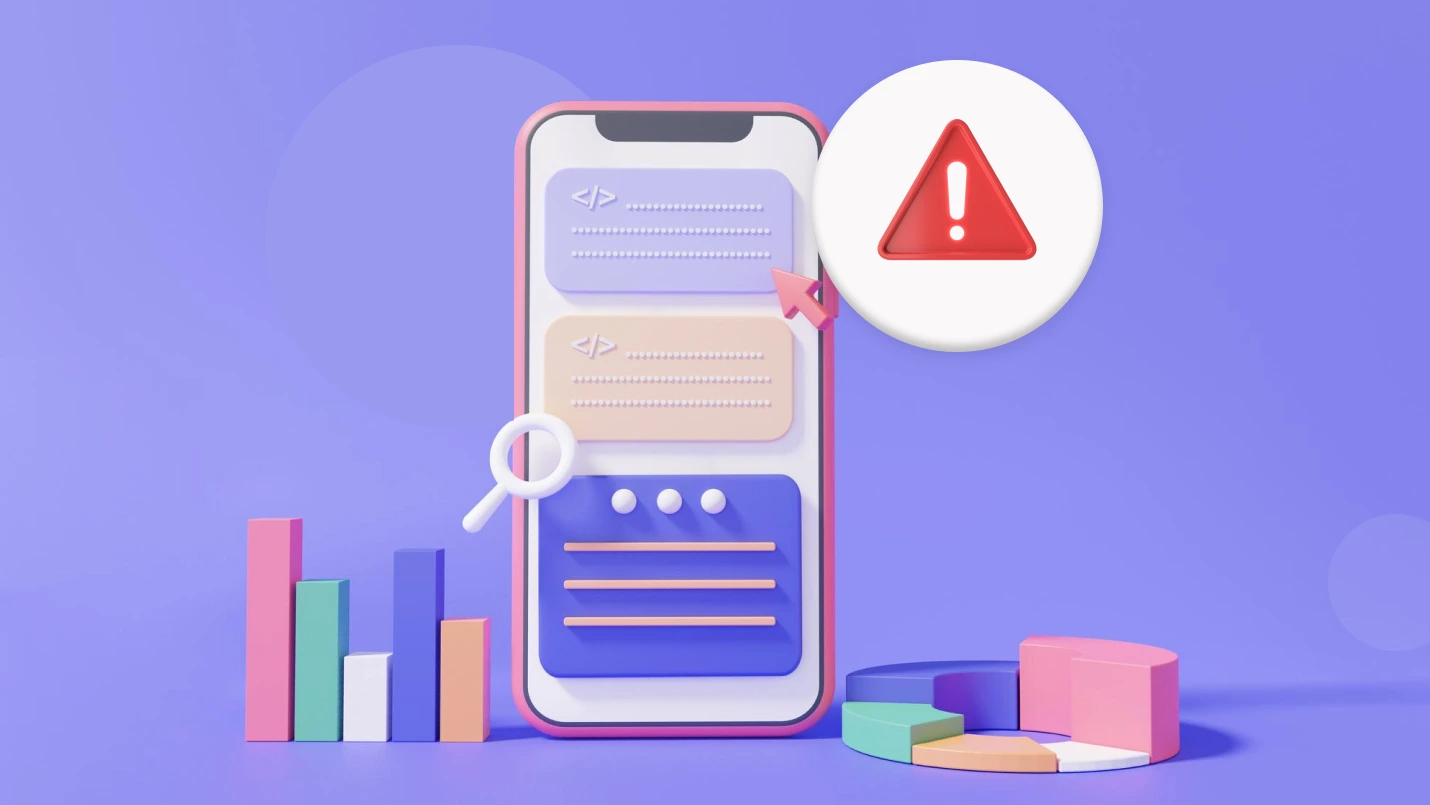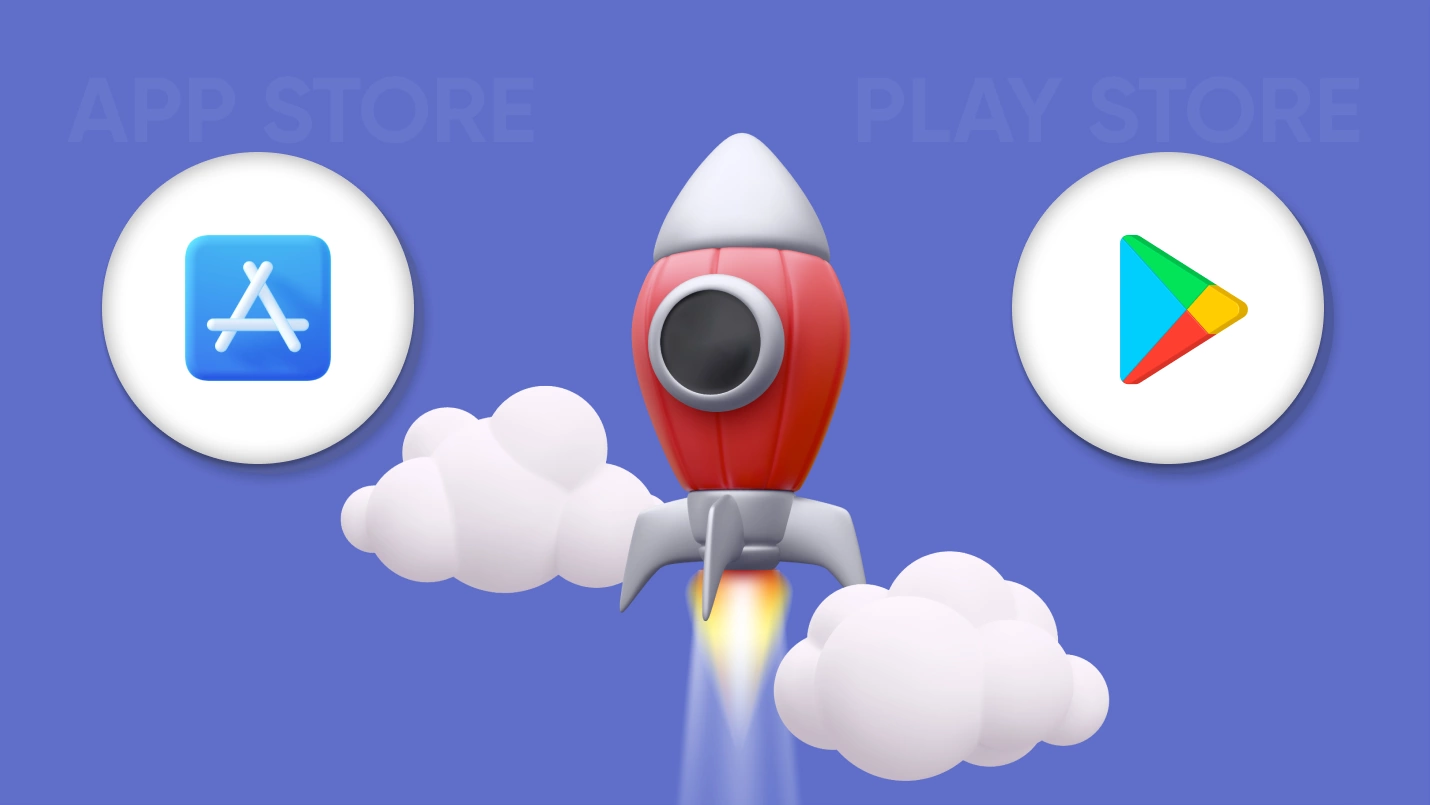What do the statistics say?
By 2023, the projected revenue from mobile apps is around $935 billion; by 2024, people will have downloaded about 184 billion apps.
Interesting to note that:
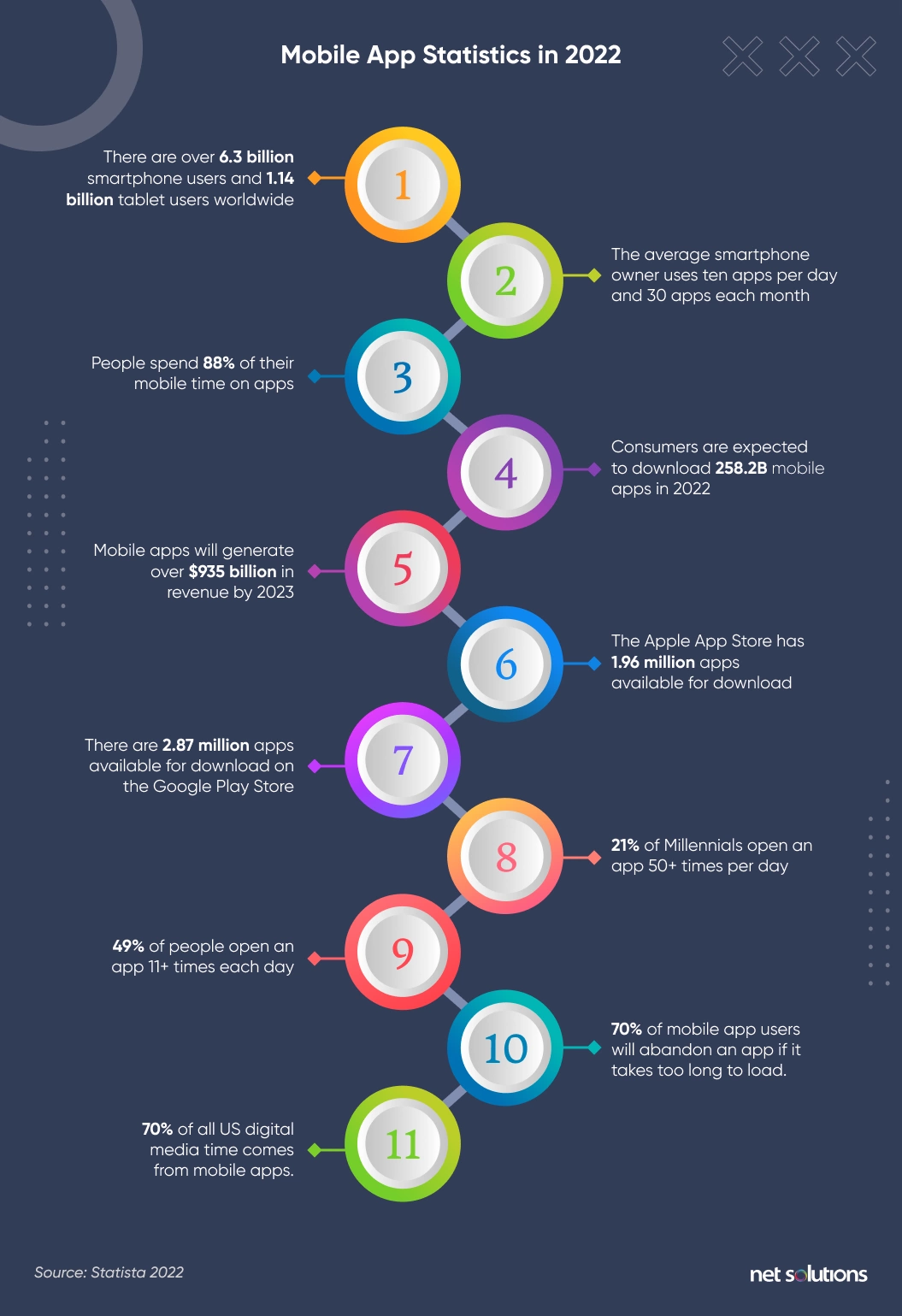
Here’s a snapshot of the growth in mobile app downloads between 2016 – 2021. Covid and related ‘work & education from home’ mode have been majorly responsible for these figures in the past two years. Look carefully, and you will see phenomenal growth trends even before the pandemic.
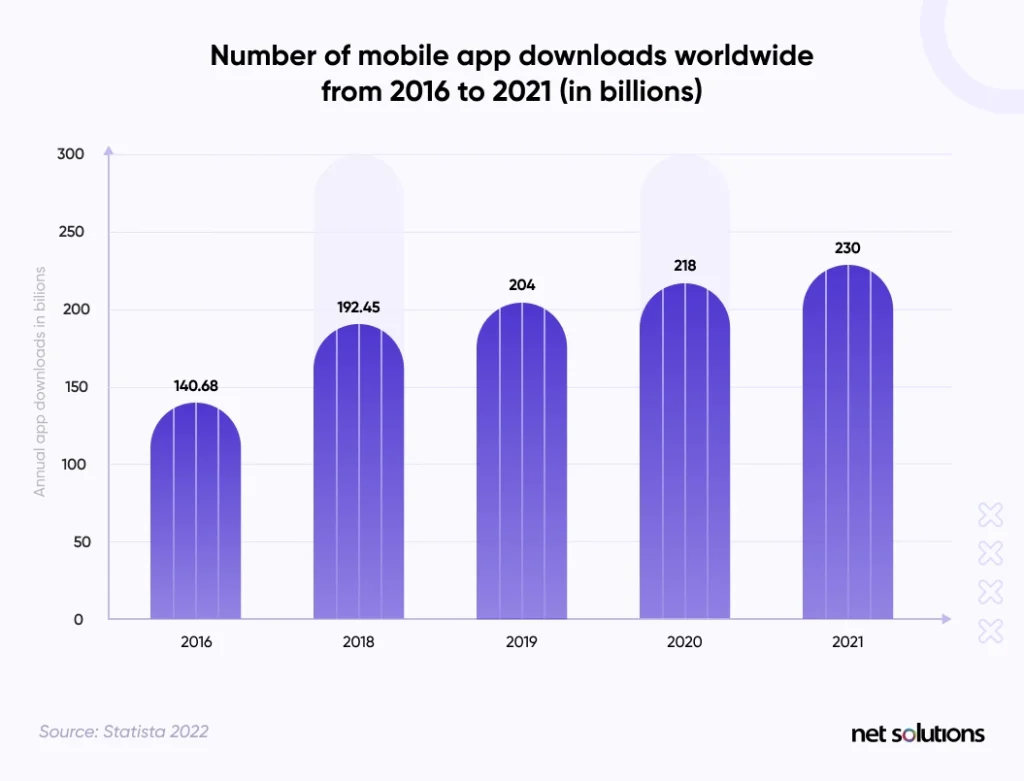
And here’s what people are spending on mobile apps in the US in the first quarter of this year!
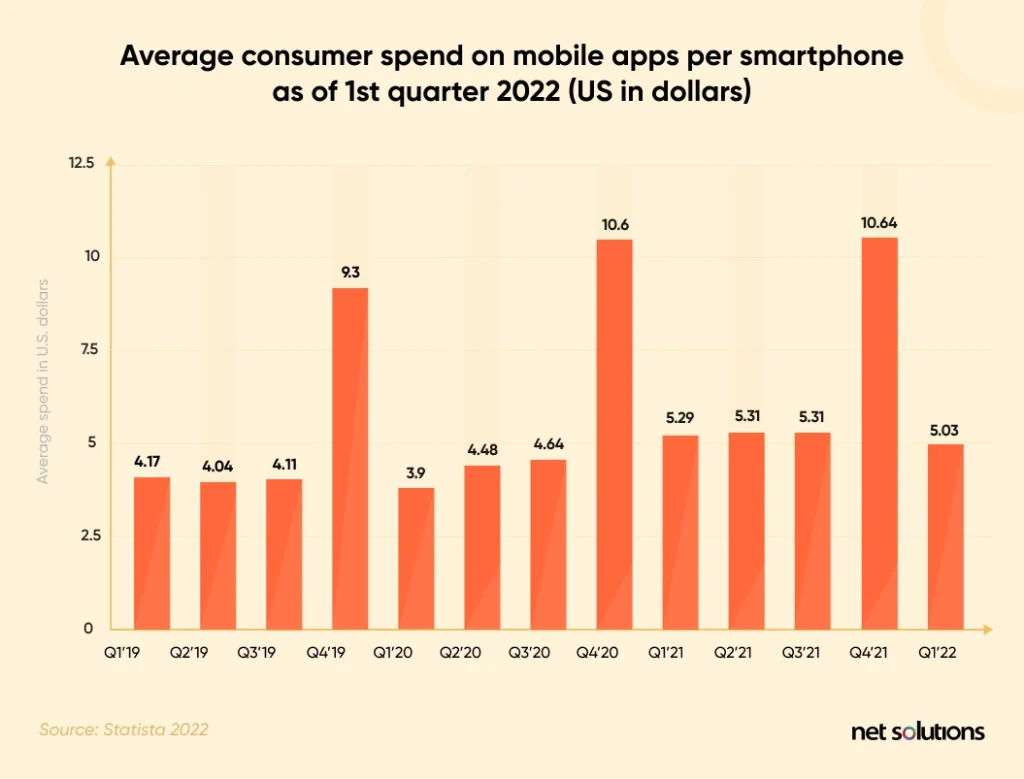
To get a further idea of how mobile spending skyrocketed over the years, below is another comparative version of the data:
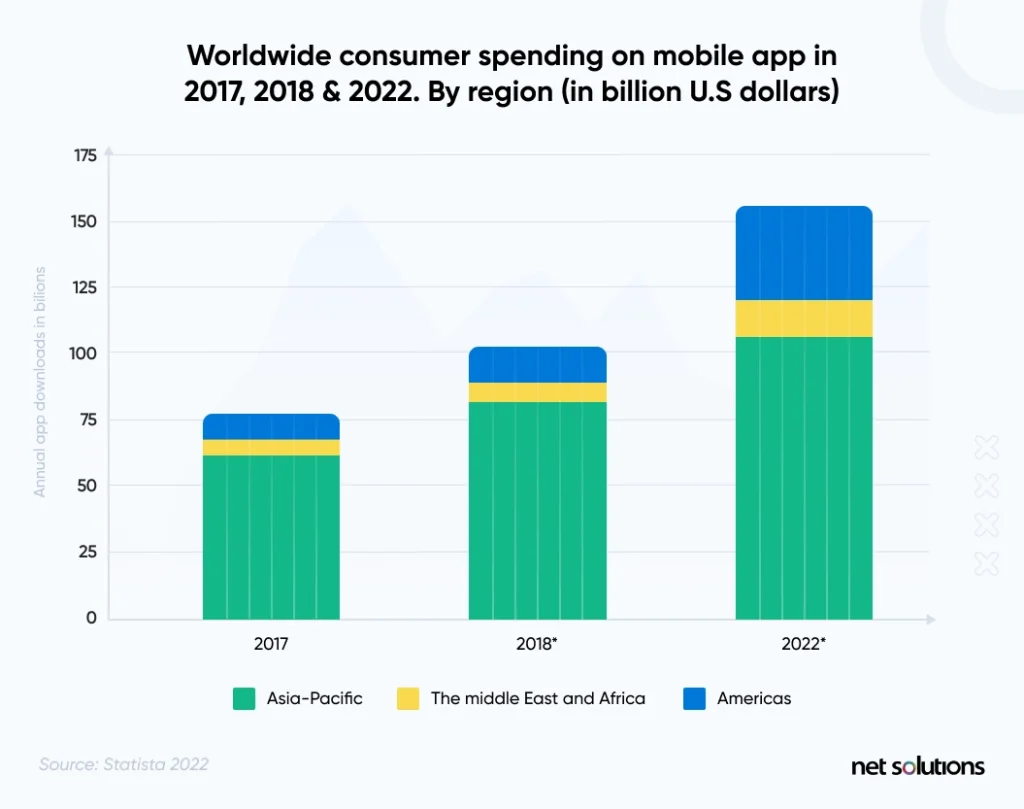
Given all of the above, the concern around mobile app failure is valid. The reasons why mobile apps fail could be contextual to a particular business organization’s marketing strategy. But here’s a broad list that enumerates some factors that can be caution points and eventually change the marketing game plan.
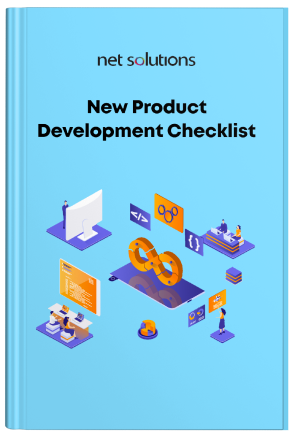
We respect your privacy. Your information is safe.
Why Mobile Apps Fail
Mobile app solutions affect the dynamics of any business. Around 80-90 percent of mobile apps launched in the app stores are abandoned after a single-use. Factors contributing to mobile app failure revolve broadly around the following parameters:
Failure to Understand the Market
Market dynamics are affected by a host of factors. An app that fails to consider the nuances is unlikely to generate interest from the audience. The following aspects need attention:
1. Market Needs
A fundamental reason why mobile apps fail is a lack of understanding of real-time market needs. Two questions are pertinent here:
- Does the app solve a fundamental need or problem?
- Does the App address something new?
If both answers are negative, the app carries a low chance of success. Unless the app has some unique value proposition or UVP, it will neither have a sound user base nor add value to the brand. Innovation is crucial in today’s market.
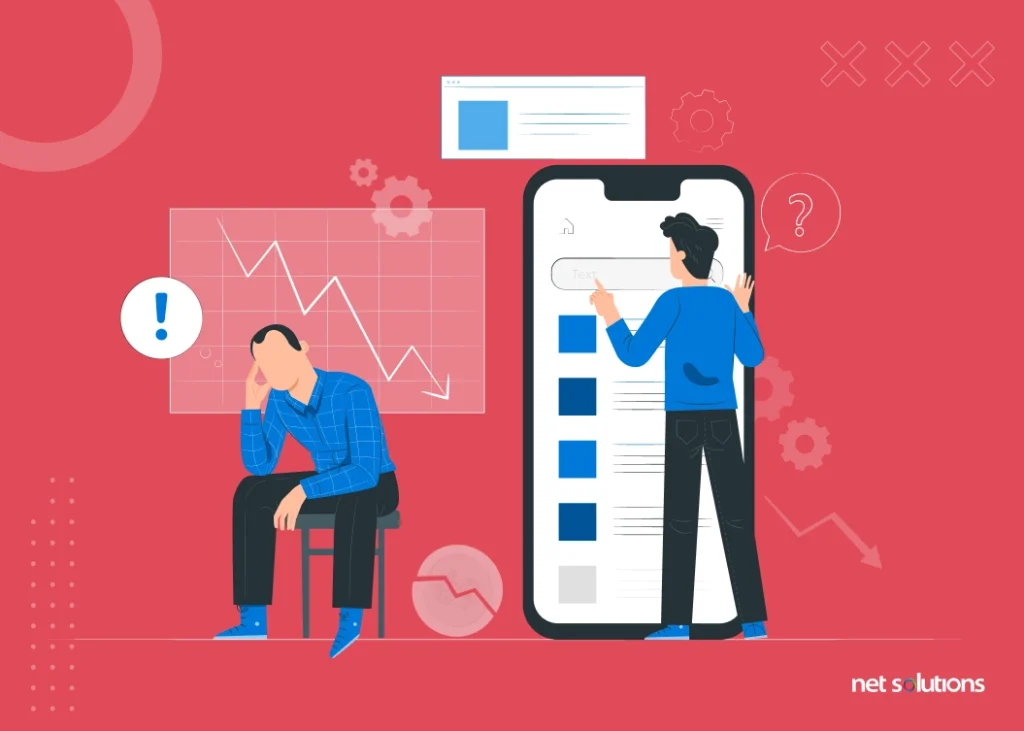
Blippy has been an example of a case where an app was developed for an unnecessary offering. A lack of proper research eventually led to the app’s demise. That it involved a data breach didn’t help the cause either!
2. Target Audience
Unless you’re Steve Jobs and can present the world something they don’t know they need, operating from an isolated workspace, cut off from your end-users, is not the best business model.
If you haven’t researched your target audience and its needs well, you are walking a half-built path to success.
Your audience will eventually decide the fate of your app. Still, while developing something, you must consider the peripheral audience that will influence the app’s success.
Say you plan an app for ages 5-7 for them to understand English grammar rules. Then you also have to keep in mind mothers, nannies, and grandparents who could all be helping the child work on the app. Your audience and its subsets should all relate easily to the App features.
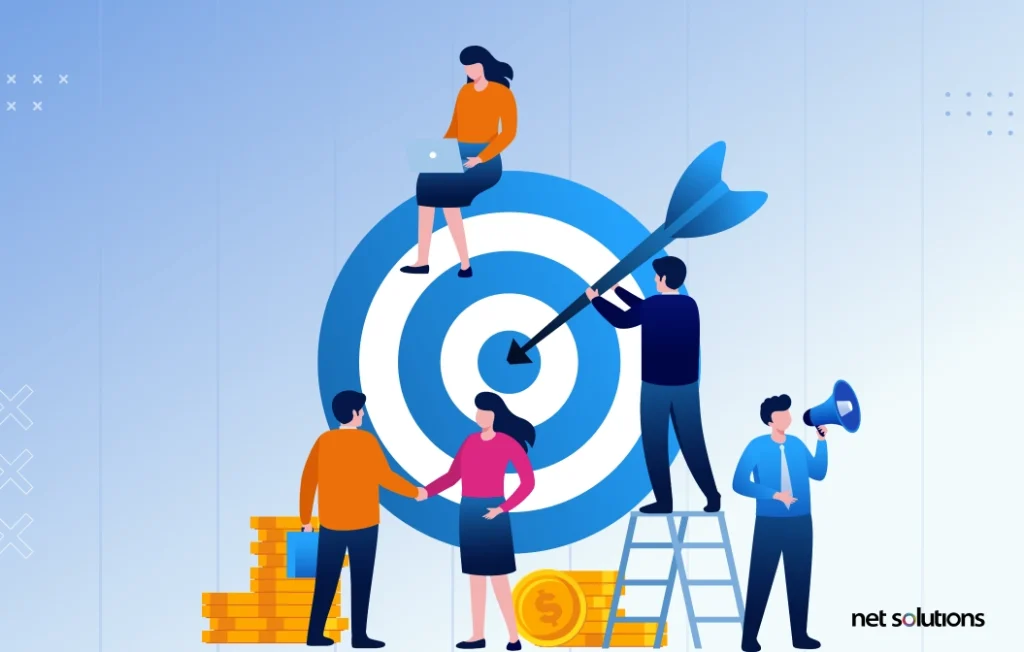
Technical Inefficiency
This relates to the software-related issues that might have been ignored or not implemented to the best. If a feature slows down an App performance, creates an error-ridden experience, and causes frequent crashes, it is an overall poor user experience. Obsolete standards and methodology and below-par coding make the product unusable.
The following create technical inefficiencies-
1. Ambiguity in Mobile App Platform
Whether your application will run on the iOS or Android platform, you are calling for some trouble if you aren’t clear on your target audience’s demographics and their mobile devices of choice.
You cannot go with a specific platform only because it suits your predisposition.
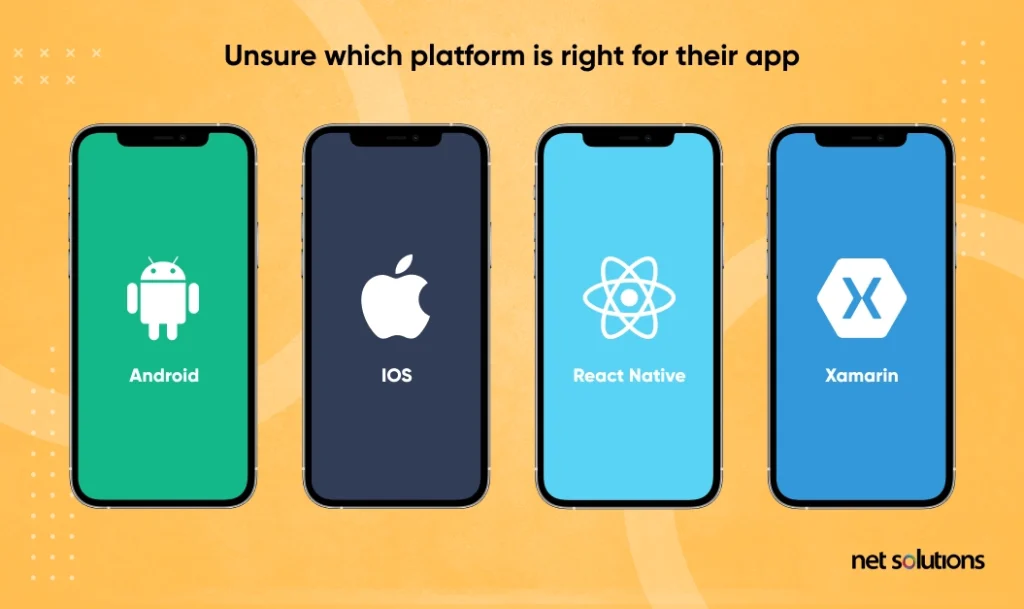
Unsuccessful apps are not just a result of the issues with the app’s performance, quality, or lack of user experience but also because the developer did not study the platform carefully. Getting apps developed for iPhone and Android platforms is the norm in the mobile-first world. And it’s great if your audience is available on both platforms.
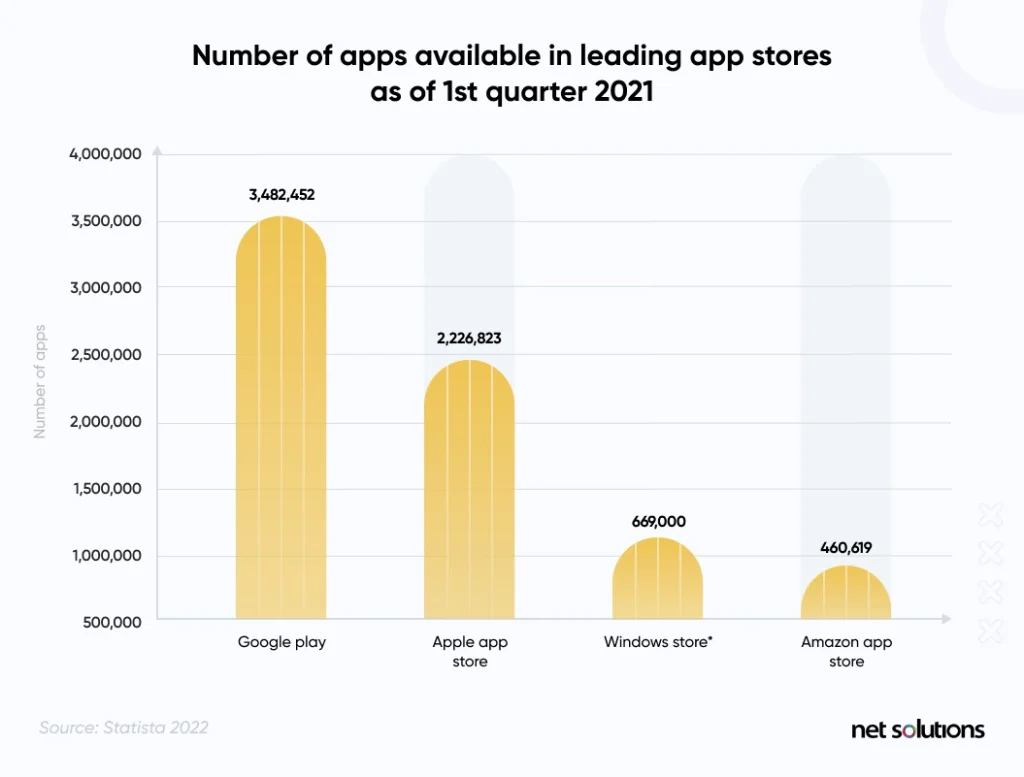
2. Feature Imbalance
Many apps are abandoned after the first use because they fail to get the balance in features right. There are too many or too few features – getting just the right proportion requires careful planning & understanding. For example, Vine, a video-sharing platform, was extremely popular and enjoyed almost 40M subscribers. But, it eventually failed despite its popularity since it could not offer any unique features to its audience except for ‘shoot & post.’ TikTok subsequently filled the void. It watched Vine’s rise and demise, learned from its mistakes, and entered the market with many features.
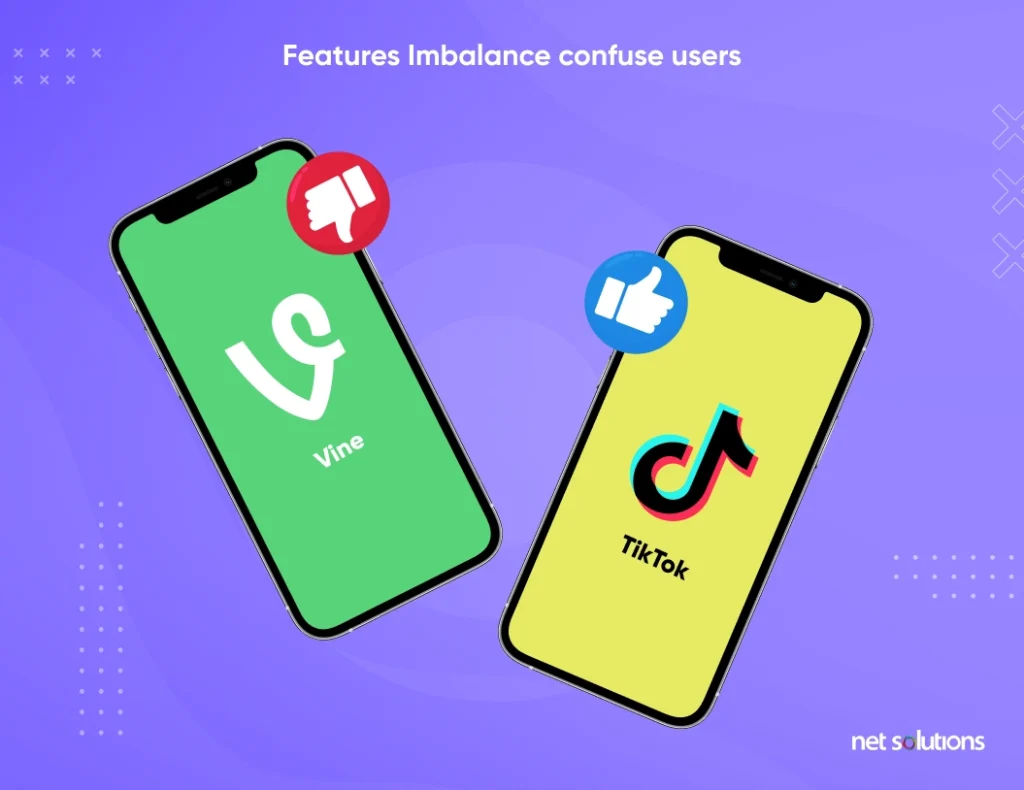
Excessive features in an app might confuse and push users to opt for something more specific to their needs – and the same would hold for inadequate features too.
3. Shaky Backend Support
This is especially true for gaming and e-commerce apps. For an app to be stable, you need robust backend support. With cloud technology at your disposal, it is time to embrace faster and better means of support and storage.
Several documented instances exist wherein the apps could not handle the traffic spikes, affecting customer loyalty & return visitors to the app.
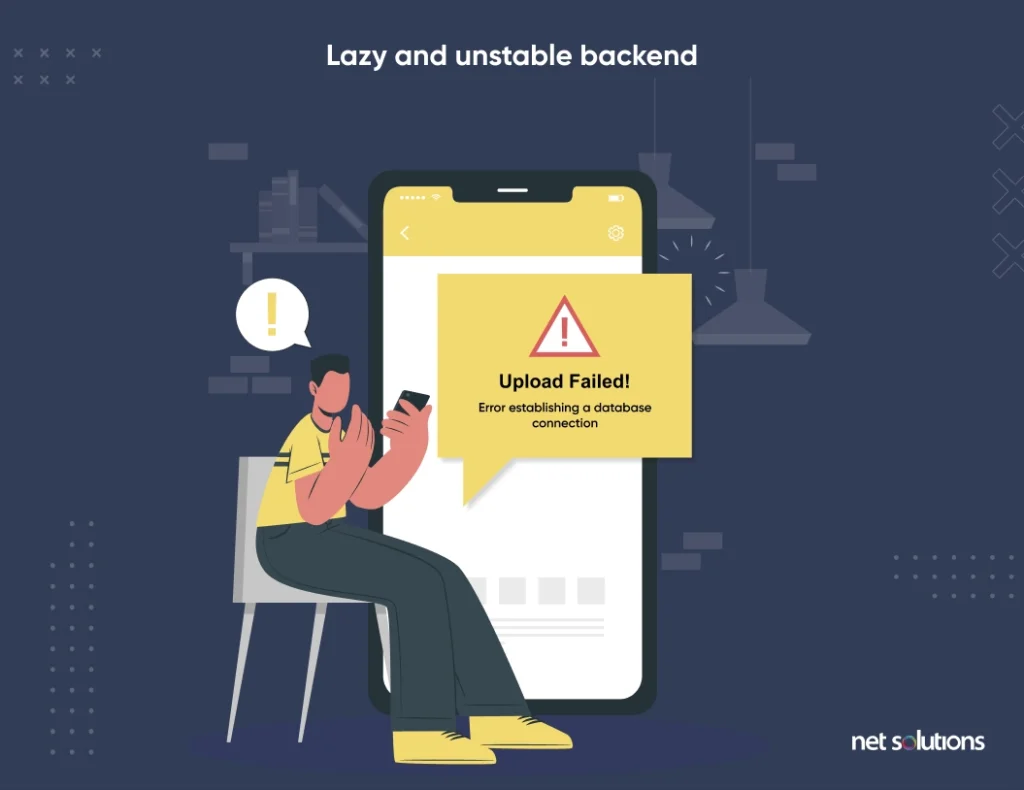
4. Unoptimized App Performance
Unoptimized apps result in a loss of interest from the audience. Poor optimization is one of the reasons why mobile apps fail. App performance optimization can often fail because of coding issues, bandwidth restrictions, and lapses in network protocols. Negligence of App Store Optimization can create app failures.
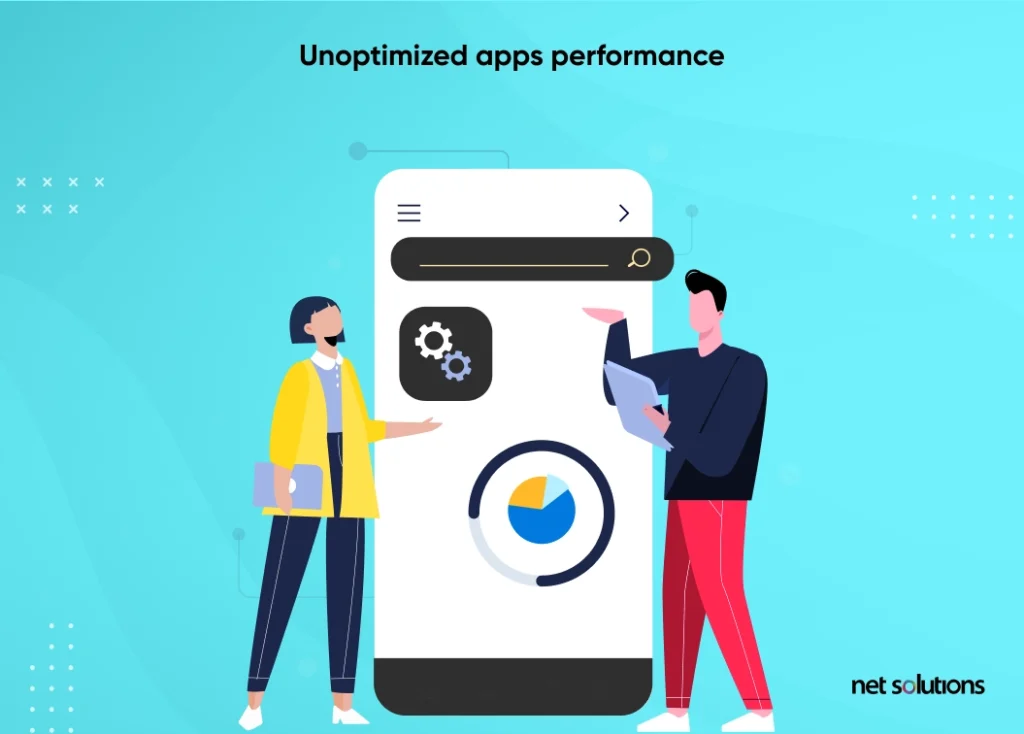
5. Avoidance of beta Testing
You would be surprised to know that only 4-6% of Apps are released without bugs. Adequate testing & iteration is essential for an app to serve its purpose.
Beta testing will help identify bugs, get user feedback, and enhance product awareness. While rigorous testing could take time & money, it will also lay the ground for a flawless performance of your product.
Sub-par User Experience Design
The app design in totality needs to be both intuitive & appealing, besides catering to the essential functions that it addresses. Feeble user experience is a self-defeating pointer, and user satisfaction should be prioritized on all fronts.
Imagine an app designed for helping the visually challenged without any alarm feature they can use in case of trouble, or a home automation application that you can link to only one phone. These apps limit your user experience instead of enhancing it.
The main criteria for app creation are starting an interaction with the user. If your app does not provide any communication or feedback to users, they will undoubtedly be less interested in using it. User experience is critical for all apps, especially when appealing to your target audience.
Below-par user experience can happen because of:
1. Complexity in Usage
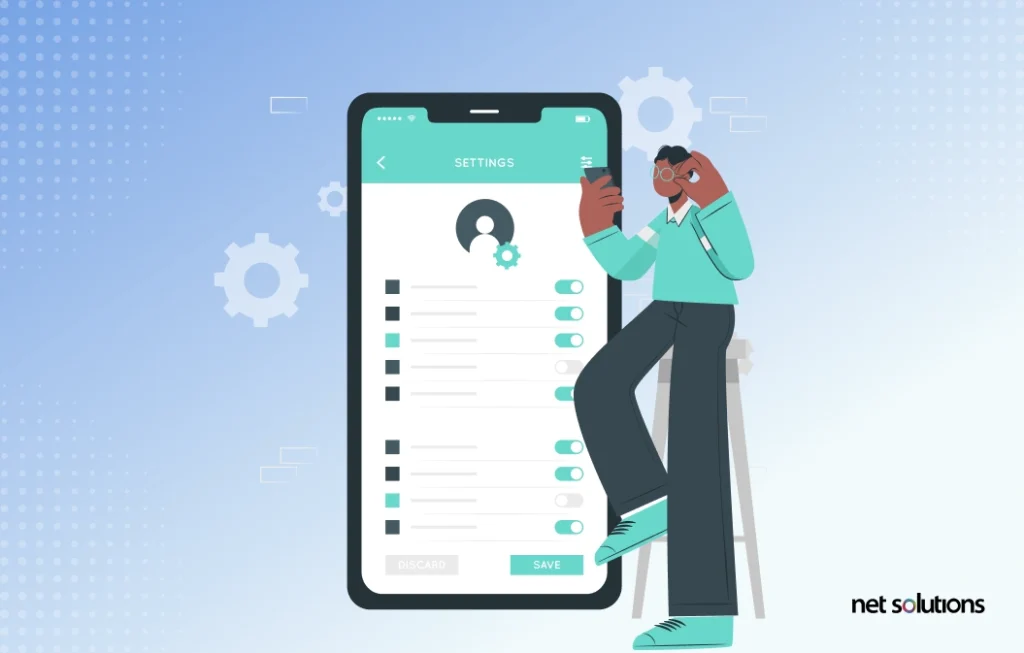
In user experience, app creators often make it an elaborate affair.
The biggest reason Apple gathered so much attention quickly was its simplicity of usage. Unless a user can locate the right buttons in your app in one go, it is not serving its purpose.
Features must be easily accessible to your audience. Users do not have the time to learn how to use your application, especially when other easy-to-operate options are available. Too many design intricacies can cause the app to fail.
2. Time Lapse
There are three kinds of time issues that will bother any user:
- Loading
- Registration
- Performance
For any app to have a repeat visitor & audience, technical glitches mustn’t impede the loading time. Second, registration on the app needs to be fast & efficient. And third, the app’s performance itself, of course, should be devoid of any time lags.
User frustration on any of the above means sub-optimal user experience. An interface that allows the audience to use the app without any hitch and has good value addition ensures the app’s success.
3. Update failure
Your application is for your users. Failure to recognize what they think about your app can translate into losing the customer base. User feedback is valuable – as is responding to it.
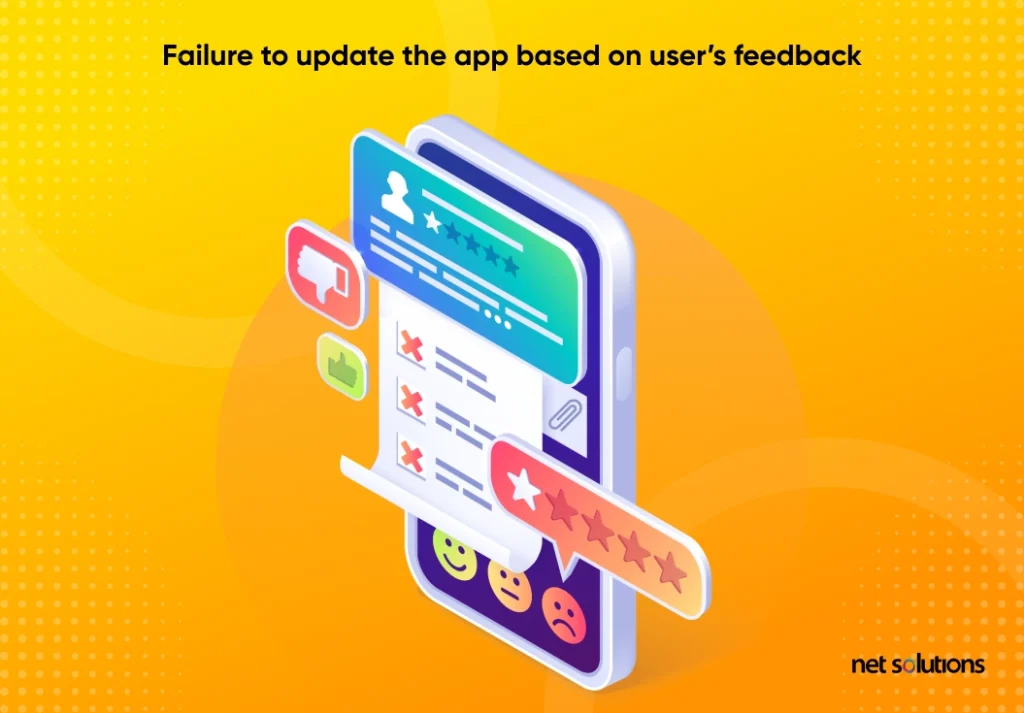
When your app is released, you try to sell it hard to your customers, not realizing that you need to pay attention to their feedback. Fixing user issues is essential to retaining customer loyalty.
The best example is Apple taking back its iOS 8 update and quickly returning with 8.0.2. It heeds the customer’s problems, and the company is excited to preserve its reputation by providing a quick solution.
Ineffective Marketing
If you haven’t worked out a clear marketing strategy, you would be wasting money, developer time, and the imagination & creativity that has gone into the planning of the app.
Pay by Touch is an example where the intention was to develop a biometric payment service, and it failed because of weak leadership, poor market research, and lack of marketing. The app had potential and talent behind it. Clients were left in the dark when Pay by Touch filed for bankruptcy.
What are the typical problems on this front? Have a look below:
1. Not Enough Marketing Time
Most businesses mistake marketing their app as soon as it is created and launched. A little hype before the launch never hurt any app. You can make optimum use of social media, and you could also request your prospects to share responses and ideas about what they would like to include in the application.
Build up a little excitement before the application launch like Apple does. It will help create a ready market for your application, so you won’t have to work hard later to make it visible to your target audience. Launch events are also good if you want the media to talk about your app.
2. Missing Details
Even when app developers furnish their end of the process, tiny missing links in the marketing strategy negatively affect the app. These are:
- Lack of clarity in the app description
- Missing out on the initial audience – even if these are free sign-ups
- Unclear listing of your brand values to define your niche
- Vague advertising and other marketing strategies (including social media)
- Ignoring the initial rating reviews
3. Ineffective Customer Support
Did you know that almost 30% of app users abandon the app just after one use because of inefficient & insufficient customer support?
The staff who deal with the daily customer interaction should undergo proper training to offer efficient solutions to users.
Failure to give appropriate support to user issues reflects poorly on your brand and is one of the primary reasons why mobile apps fail.
4. Ignoring the Competition
Every day, there are probably a thousand apps being rolled out! Regardless of your idea, you will still face a chance that somebody else will develop a better idea. If you can’t adapt to that competition and appeal to your target demographics, you won’t be able to survive.
Vine is one such example of an app that lost out simply because of an unsustainable business model and a failure to compete with competitors like Instagram.
Quibi is another example where the app developers failed to address why the app existed! They couldn’t develop good content, and the sole streaming option killed the value.
Gaps in the Business Plan & Process
An app fits into the company’s overall business strategy. You need to ask yourself some questions to know you are adhering well to the business goals:
- Have you created a business plan before planning the app?
- Did you think of your “Plan B” before launching the app?
- Is there a defined timeline for the app delivery?
- How have you protected yourself against cost overruns?
- What is your monetization strategy for the app?
Creating a business plan is like having a vision board for your app. Alternatively, you also need to list the next practicable step if the app doesn’t show encouraging signs.
Yik-Yak, for example, was an app that went ahead without any proper business plan or understanding of the product-market fit. It was launched as an anonymous, location-based messaging app for college students – yet, the anonymity factor later became an issue for the app. People started complaining of cyber threats, harassment, and invasion of privacy. The app was a failure in terms of user numbers & functionality, but it also resulted in employees losing their jobs.
Lack of Timelines creates more hurdles than is often understood – project delays lead to costing, maintenance, functional, and team issues. Google Wave, for example, was a social networking app launched in 2009 before fully ready. Not only did it lose out because of the unplanned timelines, but it also missed out on the expectations in the market without a proper time plan to back its research.
Moreover, before you plan the launch of your app, you should have clarity about the monetization strategy for the app. It would be best to define your app’s path to profitability; otherwise, your app will collapse sooner or later. You could use paid advertising or other features or items to monetize an app. Punch Quest is an app that is still available in the App Store and Google Play. It made one giant mistake when developed: the core game offered so much for free that players were understandably hesitant to pay for in-app purchases. Despite 600K+ downloads, the game made just over $10,000 in revenue.
Cost overruns are another vital element here. Watch your spending as you build your app – and keep in mind that the budget will involve annual maintenance costs also once the app starts running.
In terms of the processes, it pays to follow the agile methodology to formulate the app development to identify problems and the necessary iterations that lead to app success. At Net Solutions, we believe strongly in the process of design thinking and the agile method. This approach helps establish an in-depth user understanding and determine how to address their needs.
How do you ensure success for a Mobile App?
Given App developers’ mistakes, it’s plain to see why millions of apps fail. Apart from striving to develop a mobile app that stands out, it is also vital to plan sensibly and be cautious about the strategies you deploy when deciding the market for your app.
Marketing strategy is crucial – especially in terms of the timing and the target audience. Also, it is equally essential to create a rich user experience to ensure that your app doesn’t go down the drain like 80%-90 % of apps that users prefer not to use the second time.
Specifically:
- Create a vision board for the App; Back it with good leadership
- Research your target audience & its behavior patterns
- Study the market to find out what universal problem you are solving or which need gap you are filling
- Give attention to the coding details
- Remember that user feedback is crucial – so go ahead with a beta test
- Create a realistic timeline – and then stick to it!
- Strategize as per business goals and follow the correct processes
- Plan an effective marketing and pricing strategy
- Train the support team well
- Get the right mix of balanced features available to the users
- Synchronize the architecture of the platform and the design of the app
- Don’t skip studying competition
- Create an MVP – Minimum Viable Product – to test the product-market fit.
Frequently Asked Questions
A Gartner study in 2018 noted that hardly 0.01% of launched apps see success. 99.5% of consumer apps and about 87% of business apps fail.
An app would likely crash due to technical inefficiencies: poor memory management, software lifecycles & technical debt, inadequate testing, and poor performance monitoring. Inefficient app responsiveness to networks, coding issues (bugs, complexity, duplication), low storage, and slow updates cause apps to crash. Another common reason why mobile apps fail is poor front-end optimization.
App failure is when an app fails to work as per plan. It is impossible to check for all situations or verify the hardware is in perfect condition. Logic errors can happen during coding; viruses can cause failures. If problems are not discovered during testing, it can be a potential disaster.
Security threats and software obsolescence are two critical reasons why mobile apps fail. Keep your systems updated & the security strict. Monitor the software well and ensure acute monitoring to prevent all glitches. Ensure efficient coding and build flexibility into your app that helps you stay in line both in budget & time. An iterative development process helps have a well-performing app. When you estimate & plan your team capacity well, you can better prepare your mobile app development flow. Research well, study your market & audience, test your app before the final launch, plan the marketing and advertising, and follow a proper timeline and budget.
A successful mobile app will fit into some specific user needs, address a real-world problem, and be efficient in time of uploading, registering, and performance. It must be devoid of coding bugs, tune with the latest software updates and present an easy-to-use interface. It should fulfill all timeline and cost constraints and be backed by a solid business plan aligned with the business vision & goals. ‘Success’ for an app will also get defined in terms of the revenue it manages to earn, i.e., how well it is monetized and what it makes for the business in terms of users & repeat value.

